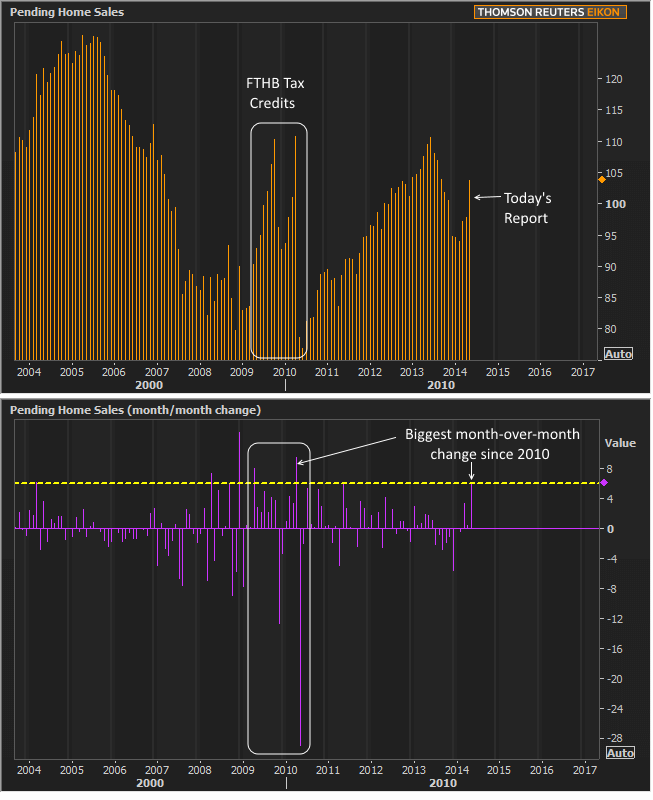There was encouraging home market news from the National Association of Realtors® (NAR) this morning. The association's Pending Home Sales Index surged in May, increasing 6.11 percent from pending sales in April. The index, a forward-looking indicator based on home purchase contracts moved from a value of 97.9 in April to 103.9. Sales resulting from those contract signings are generally expected to close in about 60 days.
The gain was broad based with all four regions of the country experiencing an uptick in contract signings. It was also the largest month-over-month increase since April 2010 when an influx of first-time buyers rushed to take advantage of the homebuyer tax credit. The gain at that time was 9.6 percent. Still the May index remained 5.2 percent below the 109.6 reading of May 2013.

Lawrence Yun, NAR chief economist said contract signings in May could be a harbinger of a better second half of the year. "Sales should exceed an annual pace of five million homes in some of the upcoming months behind favorable mortgage rates, more inventory and improved job creation," he said. "However, second-half sales growth won't be enough to compensate for the sluggish first quarter and will likely fall below last year's total."
Affordability and access to credit are still concerns for first-time buyers, Yun said. That sector of the market accounted for only 27 percent of existing home sales in May and typically are limited in their access to credit because of student loan debt and lower credit scores.
Yun expects existing-homes sales to be down 2.8 percent this year to 4.95 million, compared to 5.1 million sales of existing homes in 2013. The national median existing-home price is projected to grow between 5 and 6 percent this year and in the range of 4 to 5 percent in 2015.
"The flourishing stock market the last few years has propelled sales in the higher price brackets, while sales for homes under $250,000 are 10 percent behind last year's pace. Meanwhile, apartment rents are expected to rise 8 percent cumulatively over the next two years because of tight availability," said Yun. "Solid income growth and a slight easing in underwriting standards are needed to encourage first-time buyer participation, especially as renting becomes less affordable."
While the PHSI increased month-over-month in every region only in the Northeast was it higher than a year earlier. In that region the index jumped 8.8 percent to 86.3 in May, and is 0.2 percent above the level in May 2013.
In the Midwest the index rose 6.3 percent to 105.4 in May, but is still 6.6 percent below the previous year. Pending home sales in the South advanced 4.4 percent to an index of 117.0 in May, 2.9 percent below a year ago. The index in the West rose 7.6 percent in May to 95.4, but remains 11.1 percent lower than in May 2013.







